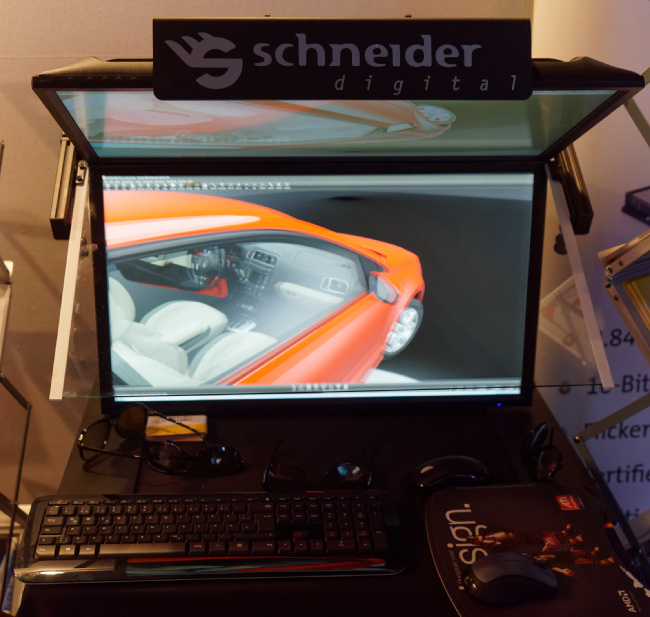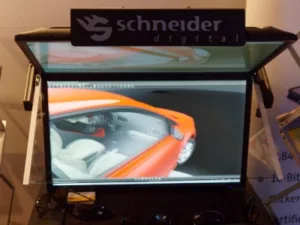Schneider Digital is a German company, based South of Munich, that was showing a dual LCD 3D display based on a design that was originally developed by Planar. Schneider works closely with Planar and was a distributor for the product. When Planar decided to stop production, Schneider developed its own version based on the same concept. The display is built around dual 28″ UltraHD Planar monitors with an optical combiner to create the effect of both images coming from the same place. The unit in Laval was in prototype casing, but a new ID is being developed. The firm also created its own solution to “flip” the image on one screen to make the displays work properly in stereo, but AMD had helped by providing a special driver with the flipping built into the software.

Also on display was a very good looking 98″ Planar UltraHD display using passive S3D. The monitor is also available in anti-glare and multitouch versions. The firm was also showing the latest zSpace Desktop VR system, which is an “All-in-one” based on an Intel Core i3 processor and a 24″ 1920 x 1080 display. The system includes an AMD FirePro W5170M graphics controller and a 500GB HDD. The system includes the ZSpace stylus and passive stereo glasses. The display has a touch screen and runs Windows 8.1. The new system does not have the multiple cameras that were fitted to the previous version, at least not obviously.
Schneider has developed its own SmartVRWall system based on 6 projectors (typically from Christie or Barco) to create a 6m x 3m video wall that has just 60cm depth, which means it does not need to be in a special room. The wall has very low latency (<1 frame) and supports 4K at 120Hz, to allow active 3D. The system has been installed all over the world with companies, especially in automotive applications but also including Siemens and Autodesk. The company has its own blending technology and uses projectors with RGB colour wheels and the system allows dynamic control of gamma and brightness is controlled at the pixel level. There are up to 24 inputs.

